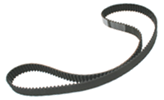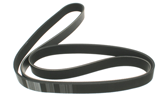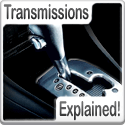Serpentine & V–Belts
In most vehicles today, the serpentine belt or v–belt is vital to the successful operation of several engine components, such as the water pump, alternator, power steering pump and air conditioning. Generally, these belts begin to fail around four years or 36,000 miles for V–belts, and four years or 50,000 miles for serpentine belts. Regardless of age and mileage, these belts should be inspected with every oil change, to insure they’re intact and properly tightened. Often when you hear a chattering, slapping or squealing noise coming from the engine compartment it’s usually one of these belts. This is an indication that the belt should be replaced immediately.
What we do in our serpentine or v–belt service:

- Inspect the existing belt for excessive wear and fraying
- Inspect the pulleys for wear and alignment
- Replace the existing belt with a top quality serpentine or
v–belt that meets or exceeds the vehicles manufacturer’s recommendations - Conduct a final inspection of the new belt installation
This service will prevent the engine from over heating or boiling–over during hot climates, and keep the engine from freezing–up during extremely cold climates. The service also provides protection from corrosion and rust, and will increase the overall comfort of the vehicle.
Timing Belt

Most engines today use a timing belt, but not all. The timing belt maintains crankshaft–to–camshaft synchronization, keeping valve operation matched to piston position. On some engines the belt may be used to drive other components such as the oil pump, water pump and balance shafts.
You should consult your vehicle’s owner’s manual for proper timing belt maintenance intervals. Generally, a certain amount of mileage needs to be met before the belt needs to be replaced. At Midas, we can check your manufacturer’s specifications and properly inspect the belt.












